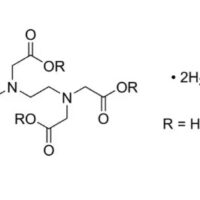Description
Linear Formula: CH3CO2NH4
General description
Ammonium acetate (NH4CH3CO2, NH4OAc) is a water-soluble, hygroscopic ammonium salt. It is an eco-friendly and inexpensive compound that can be prepared by reacting glacial acetic acid with ammonia or ammonium carbonate. It is used as a catalyst as well as a source of ammonia in organic synthesis.
Application
Ammonium acetate can be used as a reactant as well as a catalyst in the synthesis of:
- 1,3-oxazine derivatives by three-component condensation reaction with 2-naphthol and aromatic aldehydes.
- Symmetrical terpyridine derivatives by treating with aromatic aldehydes and ethyl cyanoacetate.
- Isoquinolines, furopyridines, and thienopyridines via Pd-catalyzed sequential coupling-imination-annulation reactions of ortho-bromoarylaldehydes and terminal alkynes.
It can also be used as a nitrogen source to synthesize benzoxazole derivatives via multicomponent condensation reaction with catechols, and various aldehydes in the presence of Fe(III)−salen complex as a catalyst.
PROPERTIES
grade
ACS reagent
Pack Size
500g
vapor pressure
<0.001 hPa
Assay
≥97%
form
powder
solid
impurities
≤0.005% insolubles
ign. residue
≤0.01%
pH
6.7-7.3 (25 °C, 5%)
mp
110-112 °C (dec.) (lit.)
anion traces
chloride (Cl–): ≤5 ppm
nitrate (NO3–): ≤0.001%
sulfate (SO42-): ≤0.001%
cation traces
Fe: ≤5 ppm
heavy metals: ≤5 ppm
Features and Benefits
NH4OAc is an eco-friendly, shelf-stable, and safe reagent.





Reviews
There are no reviews yet.